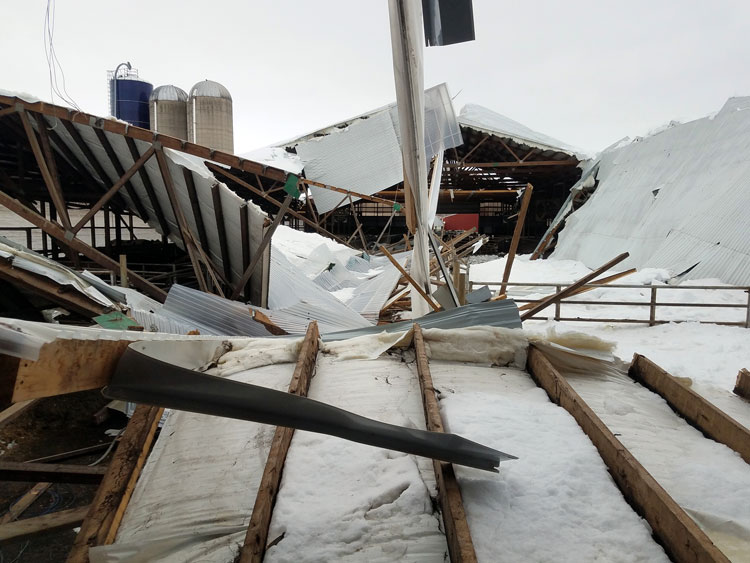
For many parts of the country, winter teased us with a mild start. Then mid-January hit, and along came snow, frigid cold, record-breaking wind chills, and ice. This past weekend, blizzard-like conditions pounded already weather-weary farmers in the Midwest.
Unfortunately, this heavy snow proved to be too much for some barns, causing roof collapses. This is similar to what happened last spring, when an unprecedented blizzard struck the northern United States in late April and caused major structural damage.
If snow is piling up on any buildings on your farm, take steps to lighten that load before it is too late. According to Agricultural Engineer Kevin Janni with University of Minnesota Extension, one way to remove the snow is by physically shoveling it off. There are major safety concerns with this approach, so he recommended the use ladders and safety ropes when working on a snow covered and icy roof.
There are snow rakes or other tools that can be used to pull snow off a roof while standing on the ground. Again, caution must be used to avoid hitting overhead electrical power lines. Janni noted that excessive scraping with such a tool to chip off ice could cause damage and lead to a leak in the roof.
If the weather is not too cold, hot water or a heat source can be used to melt snow and ice. Janni said that another method of melting snow includes warming the inside of a building with large heaters to melt the ice layer on the roof, which will eventually slide off with the snow. This approach takes a lot of heat and can only be done in an open-trussed structure.
No matter what method is used to remove snow, care must be taken to make sure no ice or snow chunks fall on people or animals below.
The best way to guarantee a building won’t collapse in the snow is to ensure that it has been engineered and built properly to withstand such a weight load. According to University of Wisconsin-Madison’s David Bohnhoff, a lack of structural engineering is to blame for many agricultural building failures. To learn more about this problem, read the article, “These buildings met their match,” which ran in the November 2018 issue of Hoard’s Dairyman.
Winter weather adds challenges to an already demanding career. Please take the time to maintain the safety of people and animals on your farm.

The author is an associate editor and covers animal health, dairy housing and equipment, and nutrient management. She grew up on a dairy farm near Plymouth, Wis., and previously served as a University of Wisconsin agricultural extension agent. She received a master’s degree from North Carolina State University and a bachelor’s from University of Wisconsin-Madison.